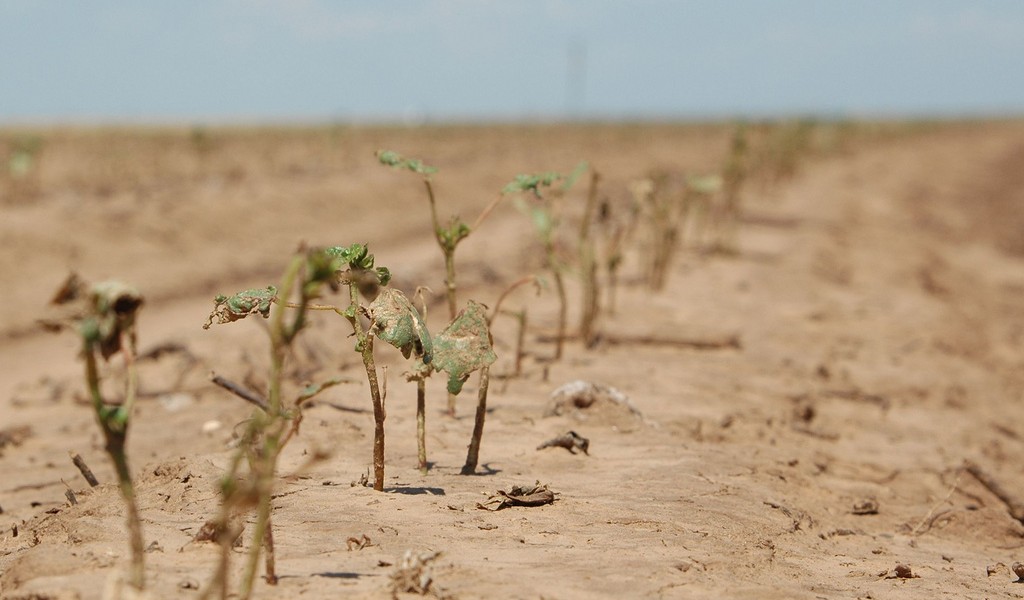According to a new study published on Monday by UC Merced, about 90% of Americans could be fed entirely by food grown or raised within 100 miles of their homes. Using data from the National Science Foundation and the USDA, environmental engineering professor Elliot Campbell and UC Merced graduate student Andrew Zumkehr were able to map the potential of every American city’s ability to obtain locally grown food. This research couldn’t come at a better time, as Campbell explains that the “farm-to-table” idea continues to grow in leaps, “It’s still a niche market, but it has taken off quickly,” Campbell said. “It’s no longer just farmers markets, but restaurants and even stores like Walmart are getting into the mix.” Though the findings show great potential for local land to feed its residents, in order to see this reality through, more policies and careful planning are needed to protect the land and encourage local farming.
Biologist Jim Cheatham has spent the majority of his past eight years contemplating a solution to the nitrogen pollution of Rocky Mountain National Park’s forests, wildflowers, and alpine lakes. The consequences of an excess amount of nitrogen creeping its way in to the park’s ecosystem through precipitation, Cheatham explains, are more acidic rivers, weakened native trees, algal blooms, and invasive weeds making their way higher into the forest. Simply put, too much nitrogen is throwing off the park’s ecological balance. The solution? Stopping the excess nitrogen from entering the park in the first place – that’s where farmers come in. John Slutsky, a dairy farmer located about 50 miles east of the park, is one of around fifty farmers involved in a voluntary program to solve exactly this issue. The farmers receive an alert when the winds are blowing over their farm from the east, rather than their normal westerly direction, and are more likely to carry nitrogen from their farm and rain it down on the park. The alert tells them how long the weather system will last, allowing farmers the opportunity to implement conservation practices during that time that keep nitrogen out of the air. The trial run of the program, according to Cheatham, has not yet decreased nitrogen levels in the park, but has prevented them from increasing.
A new report from UC Davis reveals just how steep the tolls of the California drought are for the year 2015, including a loss of 18,000 jobs, 564,000 acres, and $2.7 billion for farmers. With water reserves running low, the impacts could become even more severe, especially for small farmers, in 2016. “Despite really big cuts — 60 percent in the surface water supplies — access to underground water has allowed [farmers] to compensate for at least 70 percent of that,” says one author of the report, Professor Richard Howitt, “So the net cut is around 8 percent of total water.” This net cut, though, takes a larger toll on small farmers than large. “Big ag has reserves to deal with the ongoing drought in a way that smaller farmers do not,” Howitt explains. Although the recent mandatory 25% water cut in California cities and towns does not include farmers, some have voluntarily cut back. Their exemption, though, does not come without major loss, “They’ve taken their cuts, and overall they’re taking a bigger cut than 25 percent,” says Howitt.
In a new paper, entomology professor David W. Crowder of Washington State University and co-author John P. Reganold crunched reveals that while organic farming typically yields 10 to 18% less than conventional farming, organic farmers net 22% to 35% more than their conventional counterparts. “Public perception is that if you’re doing organic, maybe you’re sacrificing financial sustainability, but we show that’s really not the case,” says Crowder. “If you’re getting a 30% margin on your competitors, that would be the envy of almost any business.” Organic farming comes with a host of environmental benefits, but the process of transitioning to organic isn’t necessarily easy. An organic farm must have pesticide-free land for three years, and farmers cannot market their products as organic until these three years are up. With only about 1% of farming currently utilizing organic methods, high demand is not being matched by the current supply.
France took a recent step toward eliminating food waste, requiring grocery stores by law to donate leftover food to charities or as animal feed. Cracking down on food waste means hefty consequences, including fines of up to $80,000, or even two years of jail time. Formal contracts between grocers and charities will be signed between now and July, and will include clauses that ensure these donations don’t create additional work for the charity, such as having to sort out already expired foods. France itself adds about 7.1 million metric tons of food waste per year to the world’s total 1.3 billion metric tons (and to put things in perspective, the United States adds about 60.3 million metric tons.)



